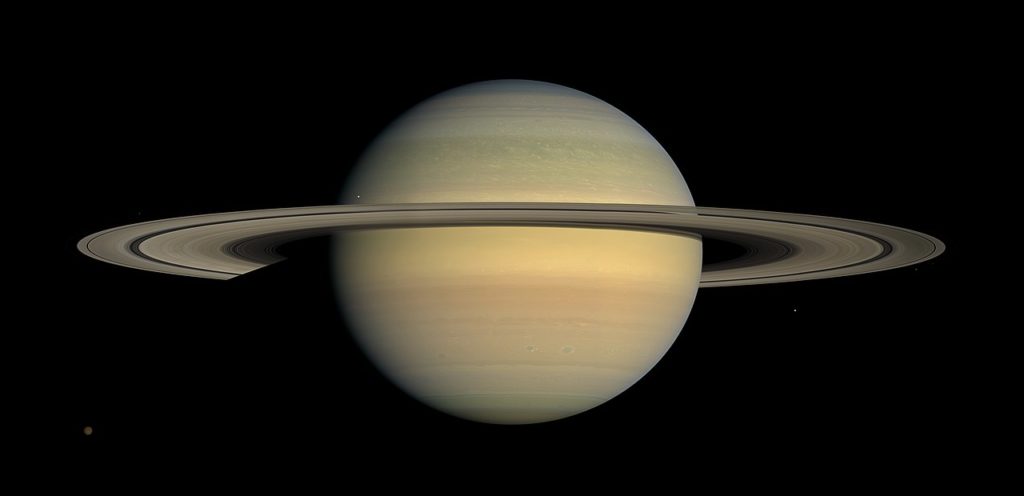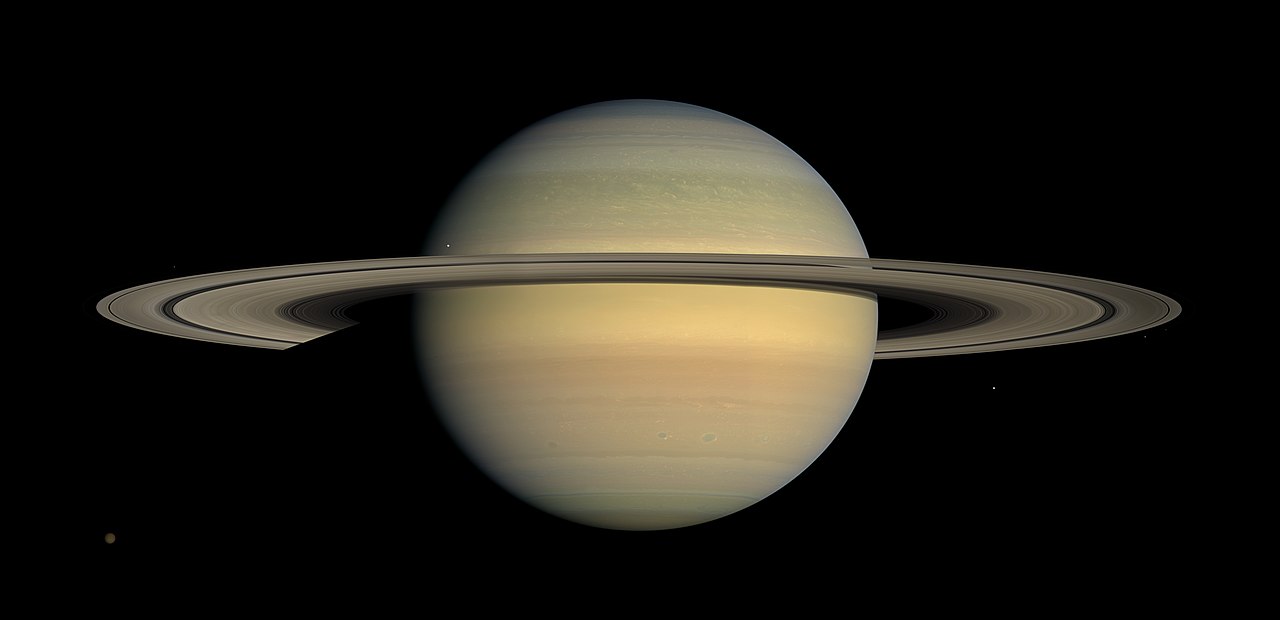
I learned this today. Some planets have rings because they have captured debris, but that debris is too close to the planet to form into a moon.
In our solar system, Saturn is obviously the most well-known planet with rings, but it is not the only one. Jupiter, Neptune, and Uranus also have ring systems. The rings of Saturn start 6,630 km from the planet’s surface and extend out to about 120,700 km. They are about 20 meters thick and they consist mostly of water ice and rock particles. The smallest particles are grains of dust and the largest are about 20 meters across.
Because Saturn’s rings contain a lot of water ice, they reflect sunlight and are very easy to see. They were first seen by Christiaan Huygens in 1655. He was a Dutch mathematician, physicist, astronomer, and inventor. He worked a lot with optics and ground his own telescope lenses. The rings of Jupiter, Uranus, and Neptune are made of small dust particles. They are impossible to see from the Earth. Jupiter’s rings were only detected when the Voyager 1 spacecraft looked back at Jupiter towards the sun. The rings were lit up by the sun.
So, how are rings formed? There are four main theories. The first theory is that they are made from leftover material that formed when the planet itself formed. The particles were too far out from the planet to become part of the planet itself, yet too close to the planet to become a moon.
The second theory is that they were formed when a moon was destroyed by a large impact from something. The impact knocked the debris in towards the planet and formed a spread-out ring. The planet might have had two moons in a similar orbit that collided, or something from outer space could have collided with it.
The third theory is that a moon moved too close to the planet and was torn to pieces by the gravitational forces, forming a ring. The debris from the moon would have been flung out into wide rings that couldn’t reform into a new moon.
The fourth theory is that the planet captured something from outside of its system. For example, Saturn could have captured rocks from the Kuiper Belt that orbits on the very far reaches of the solar system.
So, why don’t these ring systems become moons? It is all to do with something called the Roche limit. Every celestial body in the universe has its own force of gravity. This is the gravity that keeps it in a sphere. The larger the celestial body, the more gravity it has. Every celestial body is also affected by the gravity of other celestial bodies. These bodies cause a tidal effect. For example, the gravity of the moon pulls on Earth and slightly deforms it. This is why we get tides. Earth has the same effect on the moon. The sun also has a tidal effect on Earth, but the effect is smaller than that of the moon.
The Roche limit is the point where the tidal force of one body overcomes the gravitational self-attraction force of the second body. When that happens, the tidal force of the larger body rips the second body to pieces. The Roche limit depends on the size of both celestial bodies. Earth’s Roche limit for the moon is 18,470 km. The closest the moon ever comes to Earth is 363,300 km, which is far outside the Roche limit. If its orbit were to decay and it fell to 18,470 km, it would be ripped to pieces and Earth would end up with a ring system.
The sun’s Roche limit for Earth is 1,077,467 km. We are currently at 151.91 million km away, so we are quite safe. The Roche limit was worked out by Edouard Roche who was a French astronomer and mathematician.
And this is the main reason why planets have ring systems. How they get them seems to vary from case to case, but why they don’t accumulate into moons is the Roche limit. If the rings start to clump together, they will be fine until they get too large and then the tidal force of Saturn would rip them apart again. If all of the rings were in one place, outside of the Roche limit, they could clump together to make a moon. This is probably how Earth’s moon formed and it is probably how most of the other moons form. However, if the rings are spread out with most of them inside the Roche limit, there is no way for them to ever become moons.
So, planets have rings because they have either picked up debris or a moon that orbited them was destroyed. They don’t coalesce into moons because they are within the planet’s Roche limit. And this is what I learned today.
Photo By NASA / JPL / Space Science Institute – https://commons.wikimedia.org/w/index.php?curid=7228953
Sources:
https://astronomy.stackexchange.com/questions/1509/will-saturns-rings-become-a-moon
https://spacemath.gsfc.nasa.gov/moon/5Page49.pdf
https://oceanservice.noaa.gov/education/tutorial_tides/tides06_variations.html
https://www.nasa.gov/centers/goddard/multimedia/largest/rings.html
https://physics.stackexchange.com/questions/26643/why-arent-saturns-rings-clumping-into-moons
https://www.livescience.com/what-if-earth-had-rings.html
https://theconversation.com/curious-kids-why-are-some-planets-surrounded-by-rings-130318
https://en.wikipedia.org/wiki/Roche_limit
https://en.wikipedia.org/wiki/Ring_system
https://en.wikipedia.org/wiki/Saturn

